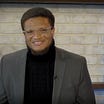Responding to Critics: A Defense of Institutional Statement Neutrality
Academic institutions ought to be safe havens for viewpoint diversity, open inquiry, and constructive disagreement.
With contentious protests gripping our nation's college campus, some higher education institutions have decided to revisit how to engage the public on controversial issues. In doing so, a trend has emerged in academia, with more than two dozen institutions including Harvard University, Columbia University, the University of Pennsylvania, Vanderbilt University, University of North Carolina, and University of Michigan adopting some form of institutional statement neutrality.
But what exactly does this mean? At its core, Institutional Statement Neutrality asserts that when contested social issues arise that do not directly concern the academic mission of a college or university, institutional leadership will refrain from issuing a public stance. In rare circumstances, when a public issue directly impacts the institution’s mission, it would be appropriate for universities to speak out.
The concept of institutional neutrality has its roots in the University of Chicago’s Kalven Report, which argues that “[t]he instrument of dissent and criticism is the individual faculty member or the individual student. The university is the home and sponsor of critics; it is not itself the critic.”
Despite this uptick in support for Institutional Statement Neutrality, the movement isn't without its critics. Among these are two university presidents.
Princeton University President Christopher Eisgruber has argued that neutrality is unrealistic. As he recently stated, “You can’t be neutral about everything.” Eisgruber believes universities must champion their core principles. Similarly, Oakland University President Ora Pescovitz, argued that absolute institutional neutrality is a "crutch" used to avoid difficult conversations. Both Eisgruber and Pescovitz believe that university presidents have an ethical responsibility to speak out and are capable of making sound judgments.
But these takes misinterpret the essence of institutional statement neutrality. The Kalven report doesn't call for absolute neutrality but rather offers a reasoned approach: institutions should defend their academic mission without getting embroiled in unrelated societal debate. According to the Kalven Report, universities are to foster intellectual inquiry, not take sides in political battles.
Critics like Eisgruber and Pescovitz are right that good leadership requires taking difficult positions. This is true regardless of approach. Exercising judgment is crucial not just in deciding what to speak about but when to speak at all. However, the presumption that university administrators can consistently play the role of moral arbiters for diverse campuses and complex issues is dubious at best. An additional risk leaders take when they issue statements on topics unrelated to their academic missions is that one ill-informed statement can tarnish the institution’s credibility.
Central to both Eisgruber and Pescovitz’s rejection of institutional statement neutrality is the belief that institutional leaders shouldn’t only have the ability to weigh in on matters, but that sometimes they have a responsibility to do so. In the case of Eisgruber, he argues that he has the responsibility to defend his institution’s values like diversity, inclusivity, free speech, academic freedom, and sustainability.
President Pescovitz, on the other hand, lists speaking out on hate and violence, local health policies, climate change and sustainability, and local policy issues, as the issues she limits her public statements to. It’s unclear whether these are Oakland University’s values or Pescovtiz’s personal values. To be clear, a sound institutional policy should limit institutional leaders from expressing their personal views on matters that are not related to the mission of the institution or its operations. It’s precisely the imposition of one’s personal values on the rest of the academic community that institutional neutrality policies are supposed to restrain.
With regards to Princeton’s Eisgruber, given Princeton's commitments to free speech and academic freedom, it’s safe to say that even under an institutional neutrality policy, those values—like any other value central to the institution’s academic mission—are appropriate to defend and protect. Accordingly, statements Eisgruber might offer in defense of those values would be entirely consistent with the HxA model on institutional statement neutrality.
Regardless, both Eisgruber and Pescovitz seem to overlook the fact that no values-based framework will be free from the temptations of political expediency. Whether a university embraces neutrality or actively takes sides, its actions will be scrutinized, and its values will be questioned. Institutional statement neutrality ensures that universities aren’t fostering a campus orthodoxy that frustrates open academic inquiry. Additionally, leaders selectively engaging with one cause while ignoring others opens the institution up to charges of hypocrisy.
When crafting its model policy on Institutional Statement Neutrality, Heterodox Academy gave considerable thought to aforementioned objections. But ultimately, we see these policies as providing clarity and consistency. By maintaining neutrality in contexts that don’t directly implicate their academic mission, universities protect the rights of faculty and students to weigh in as they see fit without feeling compelled to conform to institutional stances.
Institutional Statement Neutrality is not a retreat from tough issues. It is a principled stand that allows universities to foster an environment where students and faculty are free to learn and discover because they are free from institutional pressures to conform. It ensures that academic institutions are not co-opted for ideological agendas but rather safe havens for viewpoint diversity, open inquiry, and constructive disagreement. In an age of increasing polarization, adopting this kind of policy is not just wise—it is necessary.






